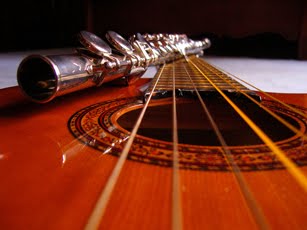 The ancient cave drawings gave us the beginnings of the human practice of replicating nature and life in still images. What for? Art, perhaps? But what we call artistic expression may have been a primal or natural leaning toward helping the mind “concretize” a memory or an imagination. That is, what humans saw with their eyes or mind, their memory or imagination expressed through a novel visual record.
The ancient cave drawings gave us the beginnings of the human practice of replicating nature and life in still images. What for? Art, perhaps? But what we call artistic expression may have been a primal or natural leaning toward helping the mind “concretize” a memory or an imagination. That is, what humans saw with their eyes or mind, their memory or imagination expressed through a novel visual record. Perhaps, it was for a practical use. The sketcher may have been telling another person what he actually saw and wanted to make that experience more real to the other person. Drawing something a person saw for his own use only would have been an improbable thing. More likely, the drawing produced social interaction, or vice versa. But then again, it may have been just for fun – the initial motivation of art? Nevertheless, not many artists – ancient or modern -- produced art merely to keep it to themselves after all the fun.
Obviously, there was always a story behind a drawing, whether a simple one or a series of events that may have required more complex drawings, as the Egyptians eventually learned to do. Today, we have the modern art of photography and cinematography – sleek documentations of not merely what we see but what we want to see. The mind, with its limitless imaginative power, has spread this art form throughout all cultures and lands, causing an explosion of images in such online providers such as youtube.com
We must admit that we get as much junk as sensible material online; but it only goes to show many of us still live within the confines of our own individual caves. The darkness within our souls still causes many of us to promote the unenlightened motives of our human character. Too much adherence to carnal display and senseless acts these media serve the baser instincts and would therefore lead to further corruption of our societies – or the global society that such media have unwittingly spawned.
What then began as an innocent pastime for cave-dwellers who may have been confined indoors due to inclement weather has developed into a sophisticated and profitable enterprise for many. But if we really try to divine the statistics, majority of those who subscribe to these popular Internet media are not making money at all. The pursuit of art merely for the sake of art is making such a great headway into our consciousness. As more and more people gain access to phones with digital cameras and video-cams, the ancient urge to dramatize real and reel life – a few moments after it happens or as it happens – overwhelms our minds and our lives like a rushing flood.
People constantly upload short video clips and old and new MTVs (many of them home-made) simply to share the fun and not to make money. The development of talent in such unified craft as music-video or music-photo has such immeasurable influence and power that will either aid us in enhancing our values or corrupting them. Everyone is into it; everyone is tuning into it as well. And as expected, everyone wants to cash in on it.
The legal and social structures of societies are certainly not sensitive and dynamic enough to keep up with these techno advancements. The recent expose of doctors and nurses in
Yes, any agency or group may restrict the use of cameras in certain areas but even TV networks don’t think twice about using spy cameras to entrap criminals. But isn’t “Trial by Publicity” (call this Entrapment or, simply, Gotcha on Camera!) a form of offense in itself when it seeks to convict a person rather than to reform and save him? That is, as a supposedly Christian nation, shouldn’t we go to a brother to tell him his sin instead of leading him to commit it? And worse than that, let the public feast upon his bad fortune of being caught by a posse of cops and media-people? Is this how we should teach our children? But as we said, there are big bucks in them TV formats. Reality sucks; but it sure brings in much money – and entertainment.
And so, we showcase the good and the bad (mostly the bad) for whatever purpose they may serve. Showcasing is often all that matters. The stage is ready; the cameras are available. So, let them roll! Action, camera and lights! (Photoshop or Ulead can enhance the colors later.)
With so much power in our hands to reduce humanity into banal images (the cave-people did not worship animals but hunted them for food and clothing), we have remained like hunters trying to gain the upper-hand over our presumed enemies. With enough laws at hand and much more in the making, we have not learned to look at each other as essential spirits within and bearing the divine goodness planted in us from the beginning. We look upon one another not as brothers and sisters but more often as competitors and rivals. We do not want to know the goodness or the potentials of others but how we can use them for our purposes.
Perhaps, we should look forward to that day when we will invent a camera that will record the inner workings of our souls and spirits. Photographs and movies are great for documenting human drama, whether real of fictional. Some of the greatest films have captured the best expressions and illustrations of human qualities such as courage, nobility, sacrifice and love. But if we were allowed to take images of the spirit in every person we met, then perhaps we could see our own real spiritual or moral condition. It would show us how dark the souls are of those who, clad in the best and most expensive apparel and glittering under the spotlights, parade before us onscreen. It would show us how corrupt the spirits are of those who preach holiness and flatter with words borrowed from God Himself. And it would expose the wickedness of some of those who sit high and mighty in the halls of government and deliver speeches espousing their self-serving programs.
On the other hand, it could also bring out the best that is in each of us.
But that sounds like sci-fi or idealistic junk. Yet, that very idea has always been the objective of art, whether we talk of visual art or music: To highlight the worst and best of the human condition and to convict or inspire us. Art seeks to gratify our senses and to enhance our character, all in one simple act of reading a book or watching an opera, a concert or a movie. This will remain as the great challenge for artists. Perhaps, we can keep up with the boom in information by strengthening this ancient and noble goal in every project we produce – whether by a major movie company or a YouTube-subscriber.
(Photo above: What was a shot taken by my photography student has been enhanced to make the historic Spanish-style road in Vigan look deserted. Once in a while, the author peeks into the camera. Just for fun!)


No comments:
Post a Comment